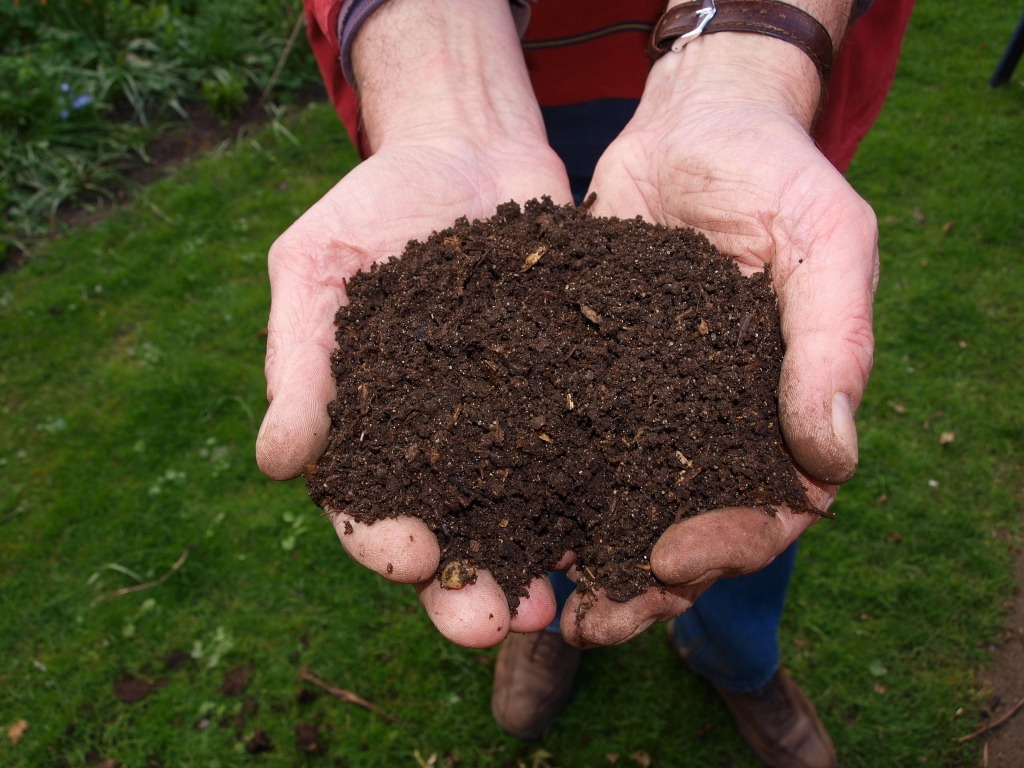People generate a lot of waste. In the United States alone, 268 million tons of waste were generated in 2017, with the average American producing 4.5 pounds per day, or just over 1,600 pounds in a year. Recycling materials like glass, plastic, aluminum, and paper can reduce the amount of trash that is sent to the landfill, but what about the waste that cannot be recycled? Composting organic wastes, such as food scraps, coffee grounds, and grass clippings, is another way to lighten garbage bags and reduce what is going down the drain. It can also improve the soil of lawns, gardens, and other managed ecosystems and save people money by replacing costly chemical fertilizers.
Composting at home: How to reduce your waste and make your own fertilizer
Statistics on compost and wastes
268 million tons of waste were generated in the U.S. in 2017, with the average American producing 4.5 pounds per day
28 percentof waste deposited in landfills can be composted. This waste leads to increased emissions of methane, a potent greenhouse gas.
7.8 million If everyone in the United States composted, it would be equivalent to removing 7.8 million cars from the road.
2.5 timesSoil with compost added to it can hold 2.5 times more water than traditional soil, reducing the amount of water that needs to be applied.
What can and cannot be composted
Before setting up your at-home compost operation, it is important to know what can and cannot be composted. While most organic material can be composted, some organic waste can lead to odor, pests, and harmful substances to plants depending on the location and style of your system.
| Easily compostable | Potentially problematic |
|---|---|
| Fruits and vegetables | Black walnut tree leaves or twigs: releases harmful substances for plants |
| Eggshells | Coal or charcoal ash: contains substances harmful for plants |
| Coffee grounds and filters | Dairy products and eggs: create odor problems and attracts pests |
| Tea bags (with staples removed) | Diseased or insect-ridden plants: diseases or insects might survive and transfer to other plants |
| Nutshells | Fats, grease, lard, or oil: create odor problems and attract pests |
| Shredded newspaper and paper towels | Meat or fish bones and scraps: create odor problems or attract pests |
| Cardboard | Pet wastes: might contain parasites, bacteria, germs, pathogens, and viruses dangerous to humans |
| Paper | Yard trimmings treated with chemical pesticides: might kill beneficial organisms |
| Yard trimmings | |
| Grass clippings | |
| House plants | |
| Hay and straw | |
| Leaves | |
| Sawdust | |
| Woodchips | |
| Cotton and wool rags |
How to set up and maintain a home composting operation
There’s no wrong way to compost, but following certain guidelines can help speed up the process. The two primary methods of composting—fast and slow—can be done in bins, wooden structures, a tumbler, or on the ground.
Slow composting
Slow composting, sometimes referred to as cold composting, takes longer than fast composting but will still break down materials. It is helpful for the kind of person who doesn’t need to generate mulch regularly but wants to cut down on what they send to the landfill. It is less rigorous but will keep organic waste out of the landfill and can eventually be used on managed areas. Steps for slow composting are the same as fast composting, but there is no need to focus on achieving optimal ratios, watering, or turning the pile. Minimal maintenance or work is required, but the organic matter will take a longer period to break down.
Fast composting
Fast composting, sometimes referred to as hot composting, is designed to break down materials as quickly as possible. It is a more labor-intensive process but produces results in a matter of weeks.
Guidelines for fast composting
- Set up a compost pile, bin, or preferred receptacle in a dry, shady, and well-drained area.
- Add inputs of greens—high nitrogen inputs such as food scraps, coffee grounds, and plant materials—and browns—high carbon inputs such as dead leaves, woodchips, cardboard, and paper towels. The optimum carbon-to-nitrogen, or brown to green, ratio is around 30:1. Shredding or breaking up large materials will help break down inputs faster.
- Moisten dry materials as they are added and as needed so that the compost feels like a wrung-out sponge that holds its shape without water dripping out of when squeezing.
- When adding new green materials, especially food waste, bury it under 10 inches of compost to prevent pests.
- Turn or agitate the pile at least every other week to circulate oxygen. The more frequently the pile is turned the faster it will break down.
- When the material is dark and rich in color it is ready to be applied in the same manner as traditional fertilizer. This can take anywhere from two months to two years depending on inputs and pile conditions.
Additional resources
For more in-depth information, including specific strategies and technical assistance, view the following resources.
- The US Environmental Protection Agency provides information on setting up a composting operation at home and how to solve some common problems.
- The Cornell Waste Management Institute has curated detailed educational resources on multiple topics for small-scale and backyard composting. These resources provide more specific information on how to set up and manage a compost pile.
- The US Composting Council has a compilation of resources for backyard compost education.



